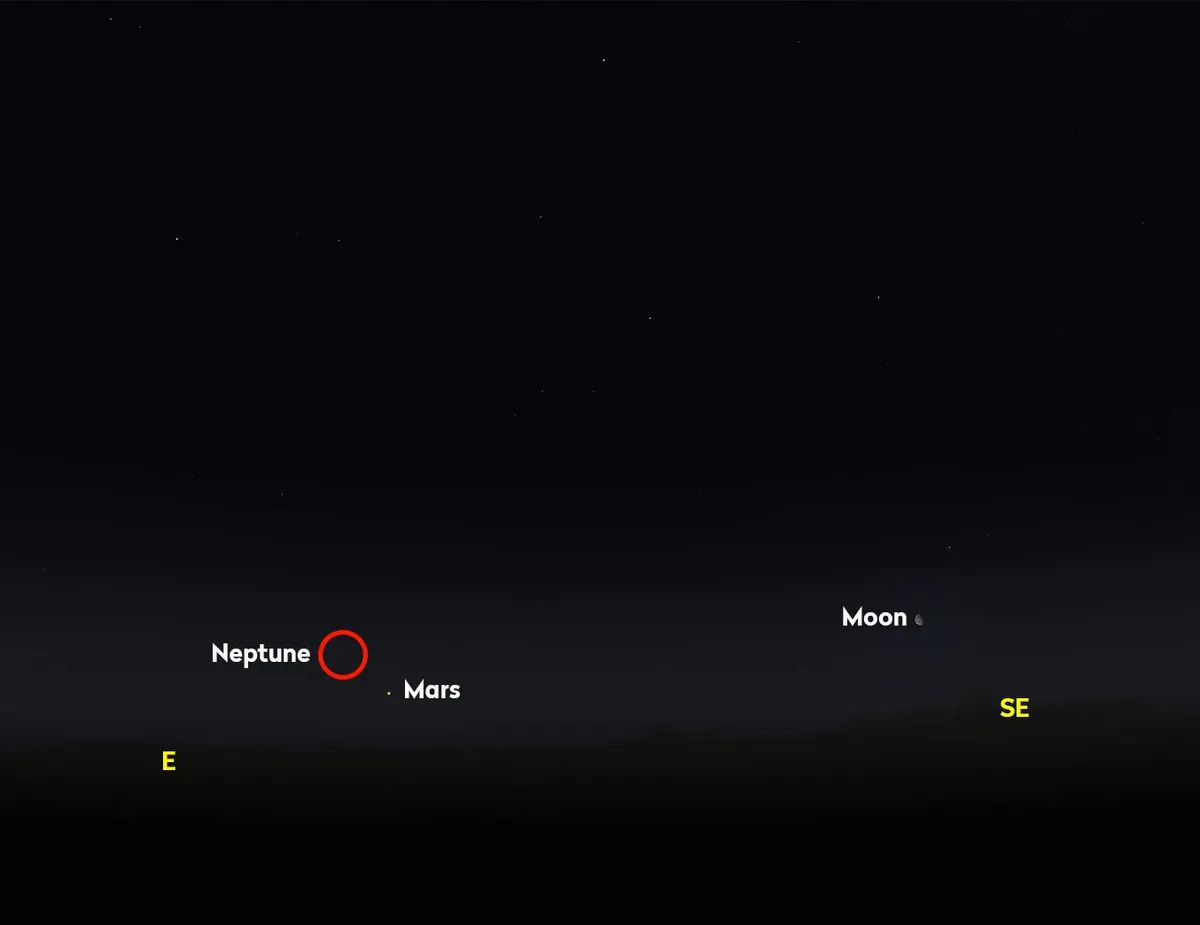This month Neptune and Mars will appear together in the sky in an event known as a 'conjunction'. Generally, the term 'conjunction' refers to the appearance of two or more celestial objects close together in the night sky.
Planetary conjunctions aren’t that uncommon and although they have little scientific interest, when bright planets are involved such as Mercury, Venus, Mars, Jupiter or Saturn, the view can be impressive.
Where the dimmer worlds of Uranus and Neptune are involved, it’s the challenge of spotting them close to their brighter neighbours that creates the pull.
How to spot the Mars-Neptune conjunction

On 13 June brightening planet Mars sits close to the dim outer planet Neptune. Mars shines at mag. –0.2 and is easy to identify because of its distinct salmon-pink colour.
Neptune is faint and will be easily lost against the bright background June morning sky, so the best strategy is to locate Mars first and use it as a stepping-stone to locate Neptune.
On 13 June, Neptune is positioned 1.7° north-northwest of Mars but the distance isn’t vastly different several days before or after this closest apparent approach.
Catching the pair early is the best way to secure Neptune and this will require you to have a flat east-southeast horizon.
Binoculars or a scope using a low power eyepiece are the best choices for grabbing the pair visually. Alternatively, a camera setup with a 400mm or shorter focal length lens should help you secure them.
If you're struggling to locate Mars and Neptune, find out which apps will help you pinpoint objects in the night sky in our guide to the best stargazing and astronomy apps.
And if you do manage to spot or even photograph what you see, be sure to let us know by emailing us at contactus@skyatnightmagazine.com or getting in touch via Facebook, Twitter and Instagram.
